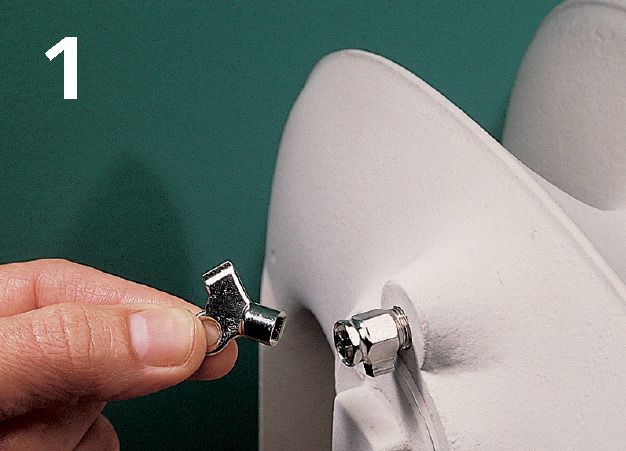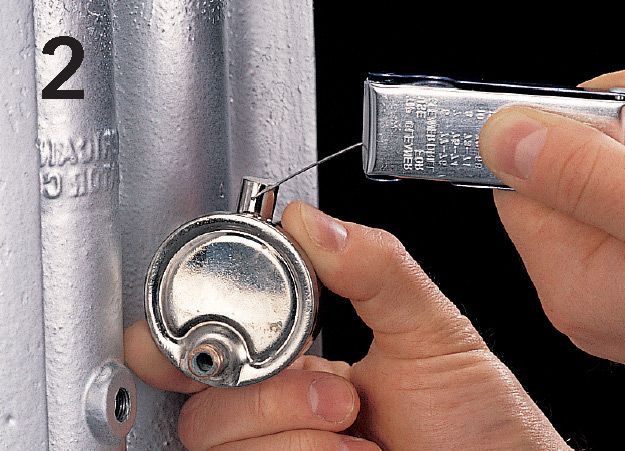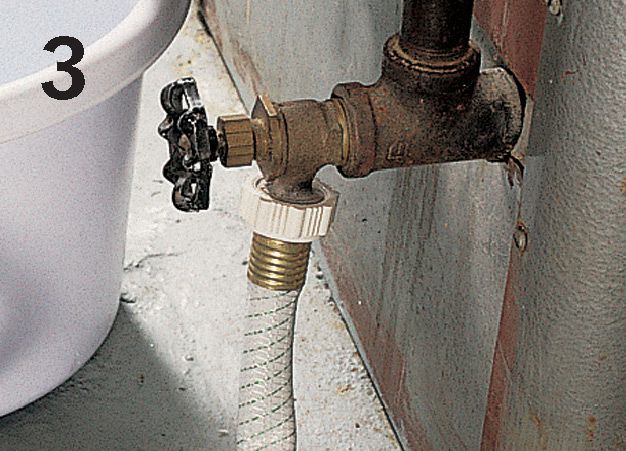
If you can’t find a key for your radiators, a local hardware store or home center may have a replacement.
Hot water systems operate more quietly and efficiently if you bleed them of trapped air once a year. To bleed a hot water system, the boiler must be on. Start with the radiator that’s highest in the house and farthest from the boiler. Place a cloth under the bleed valve, and open the valve slowly (photo 1). Close it as soon as water squirts out. Some bleed valves have knobs, which open with a half turn; others must be opened with a screwdriver or valve key, available at hardware stores.
Steam radiators have automatic bleed valves. To clear a clogged valve, close the shutoff at the radiator and let unit cool. Unscrew the bleed valve and clear the orifice with a fine wire or needle (photo 2).
Older hot water convector systems may have bleed valves on or near the convectors. Bleed these convectors as you would radiators.
Most convector systems today don’t have bleed valves. For these, locate the hose bib where the return water line reaches the boiler. Close the gate valve between the bib and the boiler. Attach a short section of hose to the bib and immerse the other end in a bucket of water. Open the bib while adding water to the boiler by opening the supply valve. The supply valve is located on the supply pipe, usually the smallest pipe in the system. Flush the system until no air bubbles come out of the hose in the bucket (photo 3). Open the gate valve to bleed any remaining air. Close the hose bib before restarting the boiler.

If you can’t find a key for your radiators, a local hardware store or home center may have a replacement.

If the radiator isn’t heating, clear the orifice with a fine wire or needle.

A convector-based heating system is usually bled at the boiler by holding a hose underwater and flushing the system until there are no more air bubbles coming from the hose.